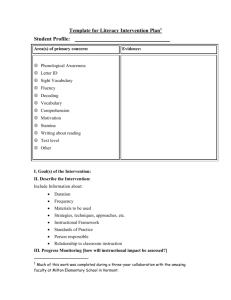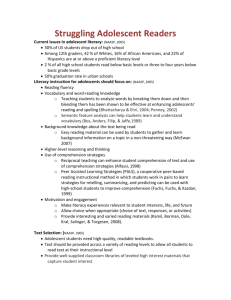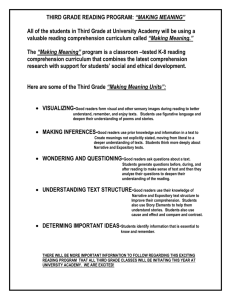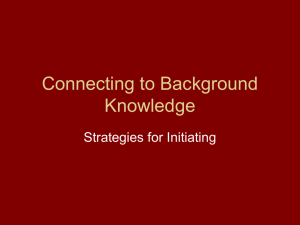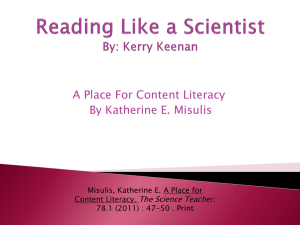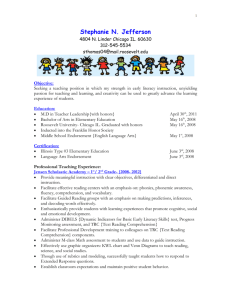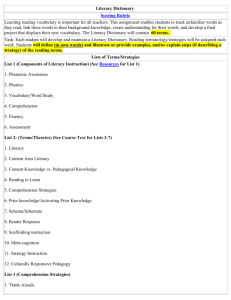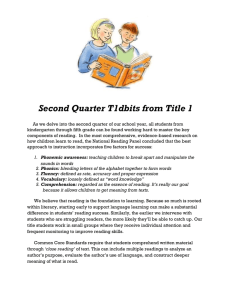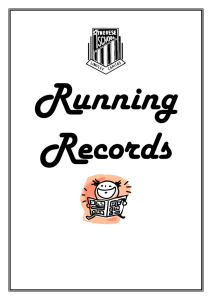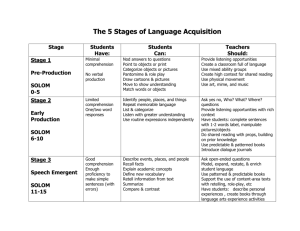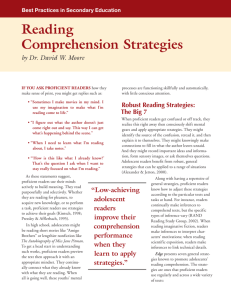Adolescent Reading Program Components Adapted from Dr. Anita
advertisement
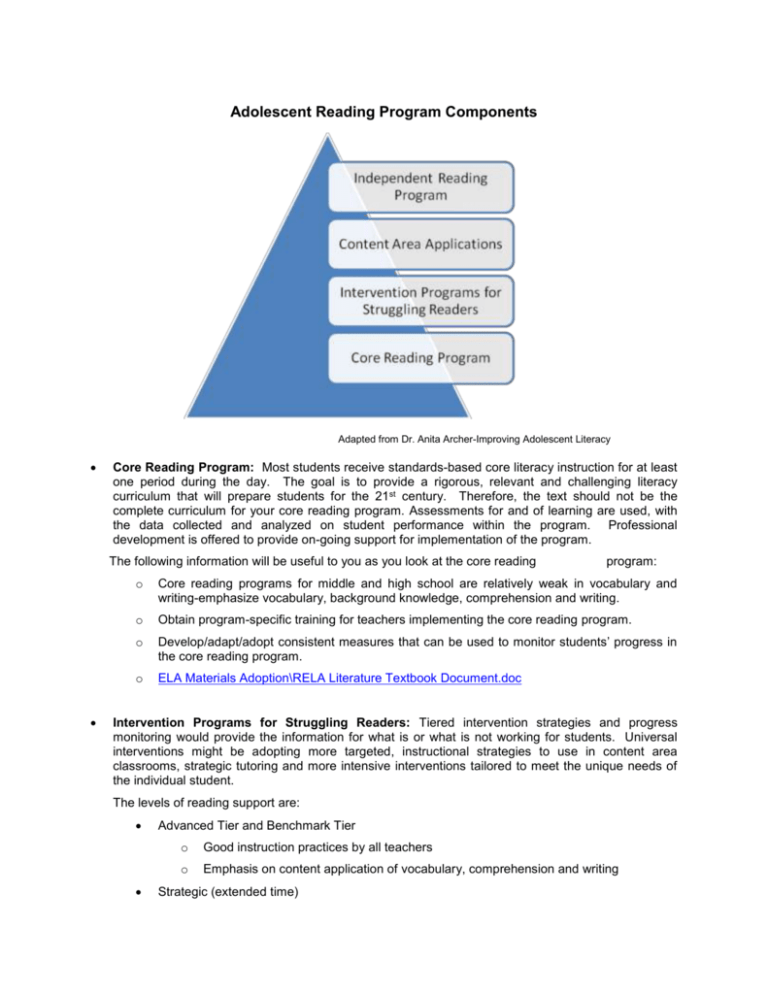
Adolescent Reading Program Components Adapted from Dr. Anita Archer-Improving Adolescent Literacy Core Reading Program: Most students receive standards-based core literacy instruction for at least one period during the day. The goal is to provide a rigorous, relevant and challenging literacy curriculum that will prepare students for the 21st century. Therefore, the text should not be the complete curriculum for your core reading program. Assessments for and of learning are used, with the data collected and analyzed on student performance within the program. Professional development is offered to provide on-going support for implementation of the program. The following information will be useful to you as you look at the core reading program: o Core reading programs for middle and high school are relatively weak in vocabulary and writing-emphasize vocabulary, background knowledge, comprehension and writing. o Obtain program-specific training for teachers implementing the core reading program. o Develop/adapt/adopt consistent measures that can be used to monitor students’ progress in the core reading program. o ELA Materials Adoption\RELA Literature Textbook Document.doc Intervention Programs for Struggling Readers: Tiered intervention strategies and progress monitoring would provide the information for what is or what is not working for students. Universal interventions might be adopting more targeted, instructional strategies to use in content area classrooms, strategic tutoring and more intensive interventions tailored to meet the unique needs of the individual student. The levels of reading support are: Advanced Tier and Benchmark Tier o Good instruction practices by all teachers o Emphasis on content application of vocabulary, comprehension and writing Strategic (extended time) o Strategic tutoring o Flexible grouping o Double blocking o Emphasis on content application of vocabulary, decoding multisyllabic words, comprehension and writing Intensive (extended time) o Special programs (e.g., Language, Wilson Reading, READ 180) o Emphasis on decoding (multisyllabic words), fluency, vocabulary, comprehension, writing Content Area Applications: All teachers in every elementary, middle and high school (middle and high school students spend most of their time in content classes) must be involved to ensure that the instructional needs of all students are met. Teachers of all content areas must improve their instruction so that students learn their content more deeply and strategically, and become more proficient in thinking about content (Center on Instruction, 2007). Content-area teachers are not expected to teach reading; however, content-area teachers are expected to support and elaborate the before, during and after reading strategies with their content-area texts. The following is focus on instruction for content-area teachers: Use of excellent instructional practices before, during and after passage reading Emphasis on vocabulary and background knowledge before reading the passage Use diverse texts, indicating that the material should represent a wide range of topics at a variety of reading levels (use Lexiles) Use of quality writing assignments (writing prompts) Independent Reading Program: Time for independent reading inside and outside the school is the practice students need to become better readers and improve vocabulary. These steps are critical to motivating students to becoming lifelong readers: Get the right books in students’ hands. (Lexiles) Give the students choice. Provide the time to read during class and outside of class.
